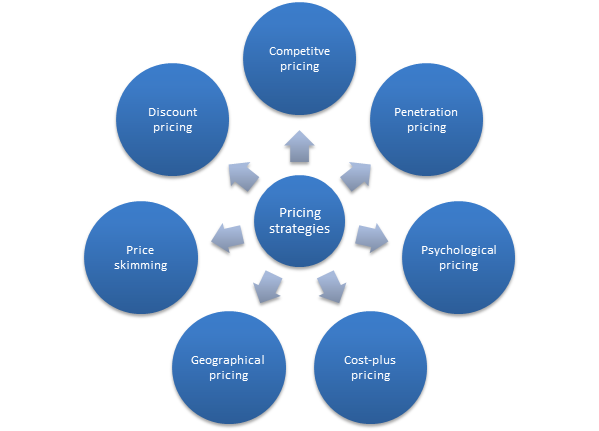What is value-based pricing?
Value-based pricing is a standard marketing strategy where the prices of a commodity are quoted based on the perceived value of the product or service instead of its historical value. This strategy is mainly utilised to increase revenue by increasing the price and keeping the volume constant.
Summary
- The value-based pricing strategy refers to one of the common business strategies where pricing is determined as per the established value of a product or service.
- It is one of the best methods to earn revenue in a market with multiple competitors.
- The value-based pricing strategy helps build and improve customer relationships.
Frequently Asked Questions (FAQ)
How to determine prices based on value?
The following steps will let you determine prices based on value easily:
- Focus on a particular segment
The first step towards determining value-based pricing is to focus on a particular segment. In this stage, one is advised to focus on a particular segment. A value-based pricing strategy can only be used in the case of specific segments. For example, if your brand sells wooden furniture, then your focus should only be on buyers who prefer wooden furniture and not the buyers of other types of furniture. In the case of B2B business, the focus should be on a specific client.

Image source: © Rummess | Megapixl.com
- Compare with the next best alternative
The next step towards implementing a value-based pricing strategy is to compare your product or service with the next best alternative available in the market. This type of pricing strategy works perfectly when there is an alternative product available in the market. The alternative product acts as an excellent item for comparing value and determining the price. The comparison also helps the brand to figure out the ways to improve its service or product.
- Realise the difference in value
The third step towards implementing the value-based pricing strategy is to realise the difference in the value. In this stage, one needs to figure out the unique feature and understand the difference between your product and your competitors' product.
- Determine the price as per the perceived value
Now that you have already figured out the unique features of your product, determined its value, and realised how it is different from your competitors, it's time for you to determine the price of your product. This is the most vital stage in the whole price determination process.
Why is a value-based pricing method necessary?
A value-based pricing strategy is significant as it makes sure that customers feel satisfied by paying the price that has been quoted as per the value of the product. A value-based pricing strategy also helps the customer in perceiving the right value of the product or service.
It helps the company strengthen its branding and customer relationship by offering products that justify the value of a product or a service.
What are the pros and cons of value-based pricing?
The following are the pros of the value-based pricing strategy:
- It develops real willingness within customers to pay the quoted price
As value-based pricing defines the right value of a product, it develops the actual willingness of customers to pay whatever amount that the brand has quoted. If a brand can successfully carry out its branding and defines the value of its product, it can also earn a higher percentage of revenue that the customers would happily pay.
- It enables a company to improve its quality
Another advantage of utilising the value-based pricing strategy is that it gives the brand the opportunity to offer better quality products or services. In addition, this strategy makes you do thorough market research before determining prices. Therefore, it becomes easier for a brand to understand the existing alternatives in the market and helps them to deliver even better service to its customers.
- It enables brands to offer better customer service
The value-based pricing strategy enables brands to cater to the customers' needs and deliver products or services as per their demand. This not only helps brands to offer better customer service but also helps them to strengthen their bonding with the customers.

Image source: © Mcarrel | Megapixl.com
The following are the cons of the value-based pricing strategy:
- It is time-consuming and requires resources
One of the disadvantages of a value-based pricing strategy is that it is a highly time-consuming process and requires resources to implement. To carry out the value-based pricing, one needs to thoroughly do market research and survey its customers to analyse both the existing alternatives in the market and the exact demand of the customers.
- It is not applicable for all products or services
The value-based pricing strategy does not work with products that do not have competition or alternatives already existing in the market. It is only suitable for products that are common or saturated in the market.
Is value the only aspect to consider while determining the prices of products?
The process of determining the prices of products and services is lengthy and time-consuming. Marketers need to focus on several factors such as competitors' products, quality, customers' demand, etc., and differentiate their products from the competitors' before settling on a particular price for a product.
The value-based pricing strategy can be used when customers can identify the value of a product. The brand must have a high reputation in the market, and the product has to offer unique features that will make it stand apart in the saturated market. Some of the other pricing strategies are:

Image source: Copyright © 2021 Kalkine Media
What could be an ideal example of value-based pricing?
The value-based strategy can be well utilised in the clothing and apparel industry as every brand always has something unique to offer to its customers. Moreover, it becomes easier for these brands to make their customers understand their value through the unique features that every brand possesses. Therefore, branding is very important for these brands to establish their value, and once done successfully, the brand becomes highly capable of earning huge revenue.
 Please wait processing your request...
Please wait processing your request...